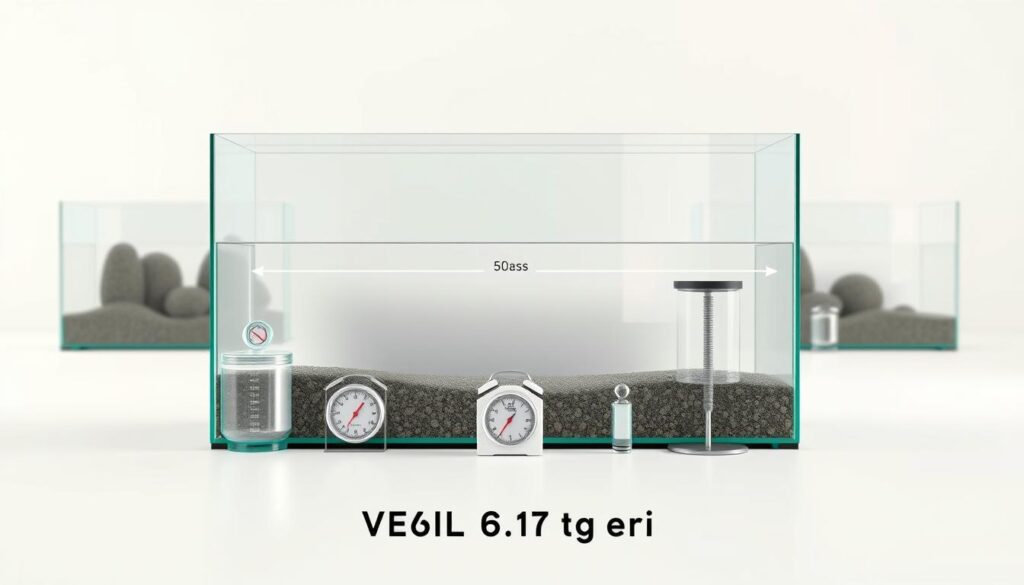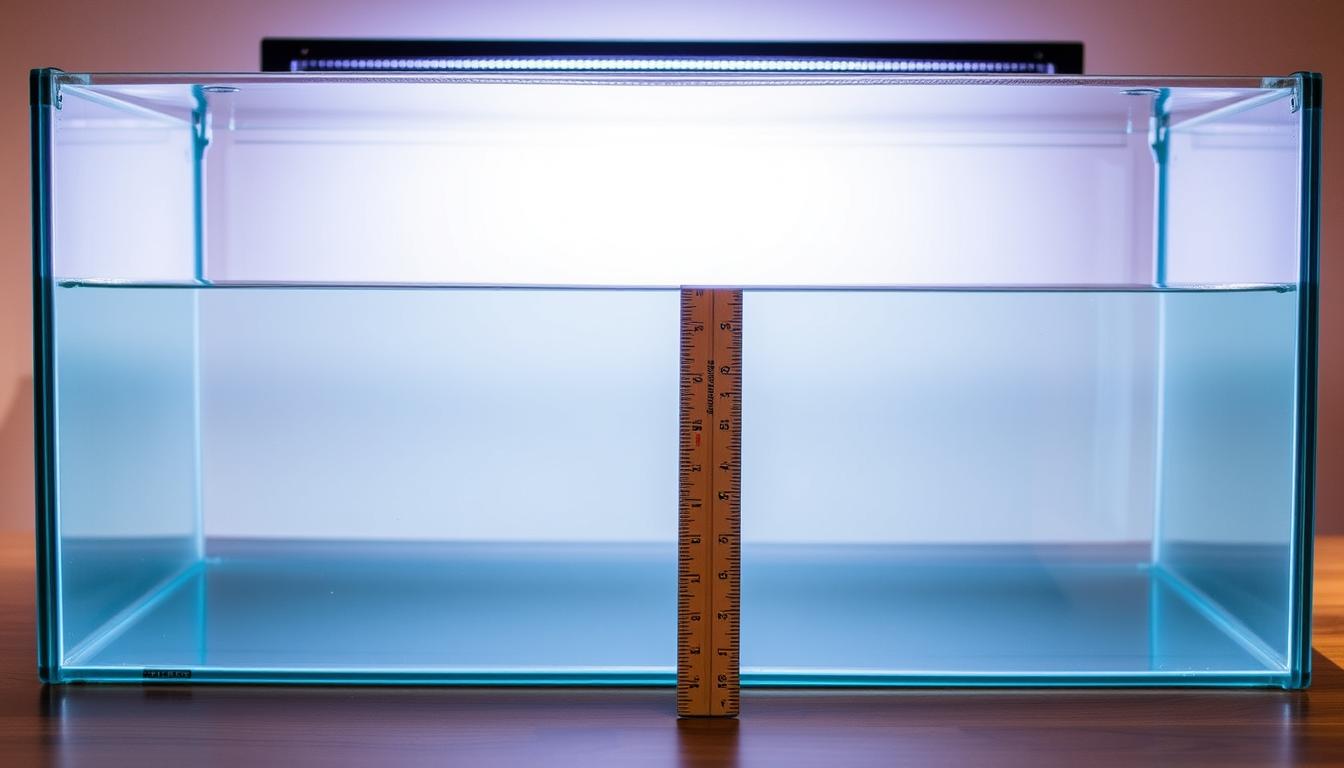Before setting up your tank, it’s important to know the 75 gallon aquarium weight—especially if you’re placing it on furniture or an upper floor. The 75 gallon aquarium weight can vary depending on whether it’s empty, filled with water, or fully decorated. On average, the empty 75 gallon aquarium weight is around 140 pounds, while a filled tank can weigh up to 850 pounds or more. Understanding the exact 75 gallon aquarium weight helps ensure safe placement, proper support, and long-term stability. In this guide, we’ll break down all the numbers you need to know about 75 gallon aquarium weight and how to plan for it effectively.
That’s a lot of water – and equipment, and decorations, of course! But don’t let that deter you. With a little planning, you can create a stunning aquatic display that will be the envy of all your friends.
So, how much does a 75-gallon aquarium really weigh? When empty, it tips the scales at around 140 lbs. But once you add water, equipment, and decorations, that number can balloon to around 850 lbs. We’ll explore the factors that contribute to this weight and provide you with practical tips on how to ensure your floor and furniture can support your new tank.
Key Takeaways
- An empty 75-gallon aquarium weighs around 140 lbs.
- A fully stocked 75-gallon aquarium can weigh approximately 850 lbs.
- The weight of the tank depends on several factors, including the material and size.
- It’s crucial to consider the weight of the tank when planning its placement.
- Proper planning can help prevent damage to your floor and furniture.
Understanding the Basic Specifications of a 75 Gallon Aquarium
The journey to creating a thriving aquatic environment begins with understanding your 75-gallon aquarium’s specifications! You might be wondering, what’s so important about knowing the dimensions and material of your tank? Well, let’s dive into it!
Standard Dimensions and Variations
A standard 75-gallon aquarium typically measures 48 inches in length, 18 inches in width, and 21 inches in height. However, you should note that dimensions can vary slightly depending on the manufacturer and the specific design of your tank. It’s always a good idea to check the specs with your supplier to ensure you’re prepared for the space it will occupy!
Glass vs. Acrylic Construction Materials
Now, let’s talk about the materials used to construct your 75-gallon aquarium. You have two primary options: glass and acrylic. Glass aquariums are generally heavier and more resistant to scratching, which can be a significant factor if you have a curious pet or a rambunctious household. On the other hand, acrylic aquariums are lighter and provide better insulation, which can help maintain a stable water temperature. So, which one is right for you?
| Material | Weight | Scratch Resistance | Insulation |
|---|---|---|---|
| Glass | Heavier | High | Lower |
| Acrylic | Lighter | Lower | Higher |
As you can see, both materials have their pros and cons. Your choice will depend on your specific needs and preferences. Are you leaning towards the durability of glass or the lightweight, insulating properties of acrylic?
The Empty Weight of a 75 Gallon Aquarium
Let’s dive into the details of what affects the empty weight of a 75-gallon aquarium. Understanding this is crucial for ensuring your floor can support the weight once it’s filled.
The material your aquarium is made of plays a significant role in its empty weight. Glass and acrylic are the two most common materials used.
Standard Glass Tank Weight Range
A standard glass 75-gallon aquarium typically weighs around 140 lbs. This weight can vary slightly based on the manufacturer and the specific design.
Acrylic Tank Weight Differences
In contrast, acrylic aquariums are generally lighter. A 75-gallon acrylic tank can weigh around 100 lbs or less. This difference is due to the inherent properties of acrylic being less dense than glass.
How Frame Types Affect Empty Weight
The type of frame used can also impact the empty weight of your aquarium. Some aquariums have a more substantial frame that adds to the overall weight. For instance, a framed glass aquarium might be heavier than a frameless one due to the additional structural support.
| Aquarium Material | Typical Empty Weight for 75 Gallons |
|---|---|
| Glass | 140 lbs |
| Acrylic | 100 lbs or less |
By understanding these factors, you can better plan for the setup of your 75-gallon aquarium, ensuring a safe and enjoyable experience.
Calculating the 75 Gallon Aquarium Weight When Filled
When you fill your 75-gallon aquarium, the weight increases dramatically – but by how much exactly? To get an accurate estimate, you need to consider several components: the water, substrate, decorations, and equipment.
The most significant contributor to the overall weight is the water itself. For freshwater, a gallon weighs approximately 8.34 lbs. So, for a 75-gallon tank, that’s around 625 lbs of water alone! To put this into perspective, consider that the empty tank weight (as discussed in the previous section) is just a fraction of the total weight when filled.
Water Weight Formula and Calculations
To calculate the water weight, you can use a simple formula: Water Weight = Volume of Water (in gallons) * Weight per Gallon. For freshwater, this is 8.34 lbs/gallon. So, for a 75-gallon tank: 75 gallons * 8.34 lbs/gallon = 625.5 lbs.
If you’re setting up a saltwater tank, the calculation is slightly different due to the higher density of saltwater. Saltwater weighs approximately 8.5-8.6 lbs/gallon, so the total water weight for a 75-gallon saltwater tank would be around 637.5-645 lbs.
Substrate Weight Factors
The substrate – whether it’s gravel, sand, or another material – also adds significant weight. The weight of the substrate depends on its density and depth. For example, a 75-gallon tank with 2 inches of gravel substrate can add around 100-150 lbs, depending on the gravel type.
Decorations and Hardscape Elements
Decorations such as rocks, driftwood, and ornaments contribute to the overall weight. While their individual weights may seem negligible, collectively they can add 50-100 lbs or more, depending on their size and material.
Equipment Weight Considerations
Finally, consider the weight of equipment like filters, heaters, and lighting. While these items are typically not as heavy as the water or substrate, they still contribute to the overall weight. A robust filter system, for instance, can weigh between 20-50 lbs.
By summing up the weights of water, substrate, decorations, and equipment, you can estimate the total weight of your filled 75-gallon aquarium. For a freshwater setup, this could easily exceed 800-900 lbs, while a saltwater setup might weigh even more.

Total 75 Gallon Aquarium Weight: Complete Breakdown
Let’s break down the total weight of a 75-gallon aquarium, including freshwater and saltwater setups. Understanding the total weight is crucial for ensuring that your floor can support the aquarium when it’s fully stocked.

Freshwater Setup Weight Scenarios
For a freshwater setup, the total weight can be estimated by considering the weight of the water, substrate, decorations, and equipment. A fully stocked 75-gallon freshwater aquarium can weigh around 850 lbs. The water itself accounts for approximately 624 lbs (since freshwater weighs about 8.34 lbs per gallon). Adding the weight of the substrate, decorations, and equipment, the total weight easily reaches 850 lbs.
To give you a better idea, here’s a rough breakdown:
- Water: 624 lbs
- Substrate: around 50-75 lbs
- Decorations and hardscape: approximately 50-100 lbs
- Equipment: around 25-50 lbs
Saltwater Setup Weight Scenarios
If you’re setting up a saltwater aquarium, the weight will be slightly higher due to the increased density of saltwater. Saltwater weighs approximately 8.54 lbs per gallon, so for a 75-gallon tank, that’s around 640 lbs of water. When you add the substrate, decorations, and equipment, the total weight of a saltwater 75-gallon aquarium can be even more substantial than its freshwater counterpart.
A saltwater 75-gallon aquarium can weigh over 900 lbs when fully stocked. It’s essential to consider this additional weight when planning your setup and ensuring your floor can support it.
By understanding these weight scenarios, you can better prepare your space for your new aquarium, ensuring a safe and enjoyable experience for both you and your aquatic pets.
Structural Considerations for Supporting Heavy Aquariums
Setting up a 75-gallon aquarium is an exciting project, but have you considered the weight implications for your floor? A filled 75-gallon tank can weigh over 850 pounds, which is a significant load for any floor. Before you start, it’s crucial to assess whether your floor can support this weight.

Floor Load Capacity Requirements
The floor load capacity is the maximum weight your floor can safely handle. To determine this, you may need to consult with a structural expert, especially if you live in an older building. Here are some key points to consider:
- Check the construction of your floor: Is it made of solid wood, engineered wood, or concrete?
- Consider the location of your tank: Is it on the ground floor or upstairs?
- Assess the distribution of weight: Will the tank be placed directly on the floor or on a stand?
Weight Distribution Techniques
Proper weight distribution is vital to prevent putting too much stress on any single point on your floor. Using a sturdy stand can help distribute the weight more evenly. Additionally, placing a thick, rigid sheet under the tank can further help in spreading the load.
Ideal Placement in Different Home Types
The ideal placement of your 75-gallon aquarium depends on the type of home you have. For instance, if you live in a house with a basement or on a ground floor with a concrete slab, you’re likely in a good position. However, if you reside in an upper-floor apartment, you’ll need to be more cautious and might need to consult with a structural engineer to ensure your floor can handle the weight.
Choosing the Right Stand for a 75 Gallon Tank
When it comes to setting up your 75-gallon aquarium, one of the most critical decisions you’ll make is choosing the right stand! You want a stand that’s not just sturdy but also complements the overall aesthetic of your tank. Let’s explore what makes a great stand for your 75-gallon aquarium.

Commercial Stand Weight Ratings
Commercial stands are designed with weight ratings that can guide your choice. For a 75-gallon tank, you’ll need a stand rated for at least 850 lbs to support the total weight of the aquarium when filled. Always check the manufacturer’s specifications to ensure the stand can handle the weight. Commercial stands are a safe bet because they’re designed with safety margins that account for the weight of the tank, water, substrate, and decorations.
DIY Stand Building Specifications
If you’re considering a DIY stand, you’ll need to ensure the materials used can support the weight. This requires some careful planning and calculation. You’ll need to consider the type of material, the design, and the construction to ensure it can safely hold your 75-gallon aquarium. Using solid wood or metal can provide the necessary strength, but you’ll need to do the math to confirm.
Material Strength Comparisons
Comparing the strength of different materials is crucial when deciding on a DIY stand. Solid wood, for instance, offers great strength and aesthetic appeal, while metal stands provide a modern look and exceptional durability. The key is to choose a material that not only supports the weight but also fits your home decor. Remember, a sturdy stand is not just about supporting weight; it’s also about stability.
Safely Moving and Transporting Your Aquarium
Moving a 75-gallon aquarium is no small feat, requiring careful planning and a bit of elbow grease! Whether you’re rearranging your living space or moving to a new home, it’s crucial to handle this task with care to avoid damage and injury.
Emptying and Preparation Procedures
Before you even think about lifting your aquarium, you need to empty it! Start by turning off the equipment and unplugging everything. Then, siphon out the water into buckets, and remove decorations, gravel, and equipment. This not only makes the tank lighter but also prevents any damage to the equipment and decorations during the move.
Proper Lifting and Handling Techniques
When it comes to lifting your aquarium, technique is everything! Make sure you bend at the knees, not the back, and consider having someone assist you, especially with a tank as large as 75 gallons. You might need to use straps or a dolly to help distribute the weight and make the move smoother.
Equipment Needed for Safe Transport
To transport your aquarium safely, you’ll need the right equipment. A sturdy dolly or sliders can be lifesavers, reducing friction and making it easier to maneuver the tank. Additionally, securing the tank with straps can prevent it from shifting during transport. Don’t forget to protect the tank with padding or blankets to prevent scratches!
By following these steps and using the right equipment, you can ensure that your 75-gallon aquarium is moved safely and efficiently. Remember, it’s always better to take your time and be cautious when dealing with such a large and heavy item.
Long-Term Weight Considerations and Maintenance
To keep your aquarium thriving, regular checks and maintenance are essential – let’s dive into the details! A 75-gallon aquarium is a substantial piece of equipment that requires careful consideration beyond the initial setup.
Stand Deterioration Over Time
Your aquarium stand is the foundation that holds everything together. Over time, the stand can deteriorate due to the constant weight and potential moisture exposure. Regularly inspect your stand for signs of wear, such as cracks, warping, or rust. Ensuring the stand remains sturdy is crucial for the safety of your aquarium and the surrounding area.
- Check for any signs of material degradation.
- Tighten any loose screws or bolts.
- Consider applying a protective coating to prevent damage.
Floor Support Maintenance
The floor supporting your aquarium is just as important as the stand itself. Ensure that the floor remains level and can continue to bear the weight of the tank. For wooden floors, check for any signs of sagging or weakening. For concrete floors, look for cracks that could compromise the structural integrity. Regular floor inspections can prevent potential disasters.
Comparing the Weight of Different Sized Aquariums
Let’s dive into the world of aquariums and explore how the weight of a 75-gallon tank compares to other sizes. Understanding these differences is crucial for planning and setting up your aquarium, ensuring that your floor can support the weight and that you have the right equipment.
Weight Comparison with Smaller Tanks (55-65 Gallons)
Smaller tanks, such as those in the 55-65 gallon range, are significantly lighter than a 75-gallon aquarium. For instance, a 55-gallon tank filled with water weighs approximately 458 pounds, whereas a 65-gallon tank weighs around 541 pounds. In contrast, a filled 75-gallon tank can weigh about 625 pounds. The difference in weight is not just due to the water; the tank itself, substrate, decorations, and equipment also contribute to the overall weight.
When comparing these weights, it’s clear that a 75-gallon tank is substantially heavier. This difference is important when considering the structural integrity of your home and the type of stand you need.
Weight Comparison with Larger Tanks (90-125 Gallons)
On the other end of the spectrum, larger tanks like those in the 90-125 gallon range are significantly heavier than a 75-gallon aquarium. For example, a 90-gallon tank can weigh around 750 pounds when filled, and a 125-gallon tank can tip the scales at over 1,000 pounds. The substantial increase in weight is due to the larger volume of water, as well as the additional material needed for the tank itself and the equipment required to support such a large aquatic environment.
| Tank Size (Gallons) | Approximate Weight (Pounds) |
|---|---|
| 55 | 458 |
| 65 | 541 |
| 75 | 625 |
| 90 | 750 |
| 125 | 1,042 |
As shown in the table, the weight of aquariums increases significantly with size. This comparison highlights the importance of careful planning and preparation when setting up an aquarium, especially for larger tanks that require more substantial support and equipment.
Read Also Betta Fish Spitting Food? Causes & Fixes
Conclusion
Now that we’ve explored the ins and outs of a 75 gallon aquarium’s weight and setup considerations, you’re ready to create a thriving environment for your fish. Choosing the right stand and ensuring proper floor support are crucial steps in this process. By following the 75 gallon aquarium weight conclusion guidelines outlined in this article, you’ll be well on your way to a successful aquarium setup.
As you finalize your aquarium setup, remember to consider the long-term weight implications and maintenance needs. Regularly inspect your stand and floor support to prevent any potential issues. With these aquarium setup tips in mind, you’ll be able to enjoy your beautiful 75 gallon aquarium for years to come!
We encourage you to share your experiences and ask questions as you embark on your aquarium journey. With the right knowledge and preparation, you’ll be able to create a stunning underwater world that brings joy and relaxation to your home.

